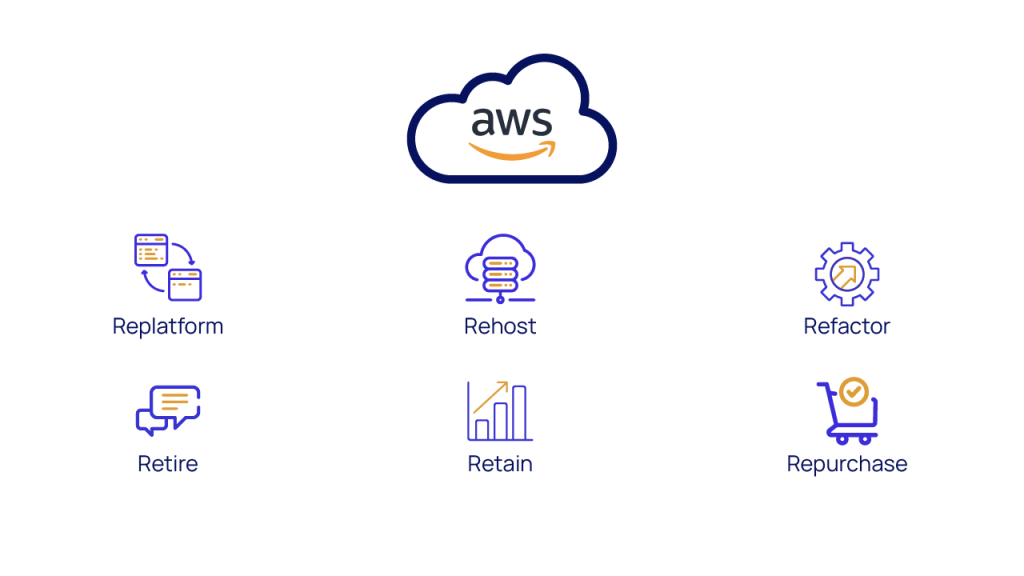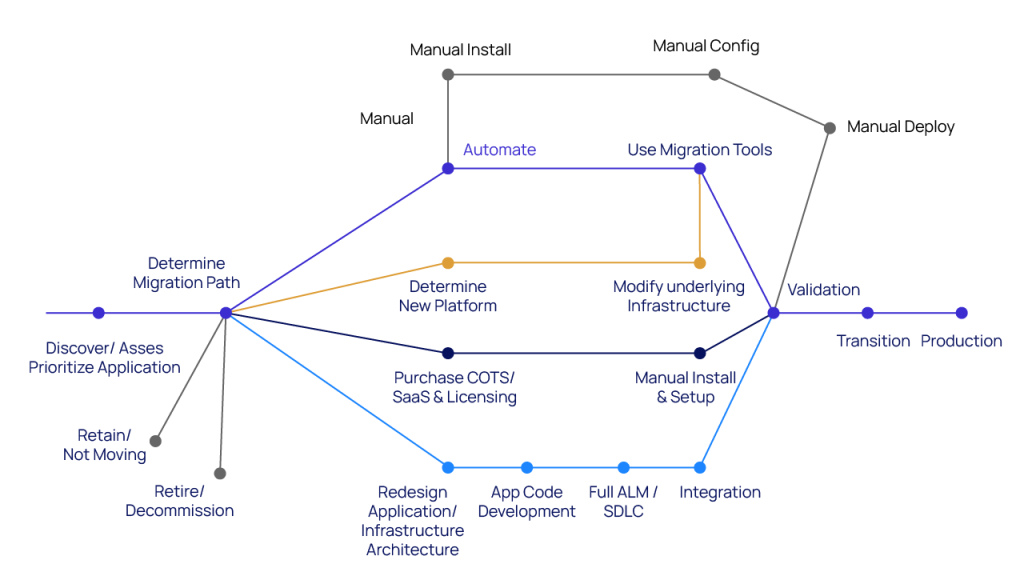This website uses cookies. By continuing to browse the site, you are agreeing to our use of cookies
How AWS Eases your Application Cloud Migration Efforts?
Cloud
May 11, 2021

With the advent of AWS cloud computing services for gaining optimal cloud migration benefits, the most important questions that arise in the mind are-
- Should we move our existing applications to AWS for TCO reduction?
- What are the strategies in the cloud migration of applications to AWS?
- Is there a cloud migration automation tool to leverage?
As more feathers are getting added on the cloud computing services (especially AWS), the importance of these questions has proven to be rooted deeply. This blog provides an insight into these questions and provides information to take a strategic decision on application migration to AWS cloud.
Urge for Application Migration to Cloud
In the digitally growing world, every application needs to be fast, secure, and reliable. The huge cost of infrastructure remains a major barrier as well as risk in realizing this application modernization. One of the major risks for an organization with the existing traditional applications and infrastructure is that, they are made up with a very huge cost. If the organizations are in need to accustom to the modern application development and deployment, then they should spend again on what they have spent before.
To bring up the technologies and applications that are scaling up for the growing demands is the next risk which remains the hindrance for many organizations. This is a need of the hour to level up the availability and security of an application at par with that of the competitors. The infrastructure, when maintained on premise, the onus is on the shoulder of the organization. This involves not only the maintenance and the setup of the production servers, but also the disaster management.
Benefits of Migrating your Existing Applications to the AWS Cloud
AWS has proven to be a blender of all these services and a perfect solution to mitigate the risks discussed so far. AWS cloud offers everything needed to support modern application deployment as a service. The infrastructure is managed by AWS and only the cost of the services to be used should be borne by the organizations who use the services.
The decision of leveraging AWS is a preferred risk-transfer action taken by many organizations. Now, as the infrastructure and the maintenance would be taken care of by AWS, the organizations must find a way to migrate their application stack to be independent and easily scalable. As there are a vast number of services provided by AWS, the organizations should come up with the list of services that are needed.
The major benefit of the decision would be the enormous TCO reduction. If the infrastructure is owned by the organization, the maintenance cost would be the same irrespective of whether the total capacity is utilized or not. But when using AWS, you have to pay only for the services needed for the application to run.
Application Migration to AWS Cloud
Based on the risks discussed above, maintaining an application with an outdated technology and architectural style is not feasible anymore. To keep pace with the technological advancements, it is mandatory to get equipped with future-proof applications that are independent and can be easily maintained. Before starting with cloud migration, it is needed to identify the applications that are no longer needed to be migrated. This reduces the cost. The applications can go with the minimal modifications to work on AWS and achieve agility and maintainability.
A legacy application, being a monolith application, is not easily scalable. So, the focus should be on the modern architecture style of applications and application modernization of the monolith suitably. The application can split into various layers that should be capable of running independently so that we can ensure the scalability and reliability.
Hexaware’s amaze® for applications product is a big winner in the race of products that helps on converting the legacy monolith applications into microservices. These microservices can be eventually deployed in AWS with ease. Amaze® for Applications helps in application replatforming and refactoring in AWS.
To start with application cloud migration, first identify a big monolith to split into multiple small independent applications. This also includes splitting of databases and configurations. Not only the applications can be hosted in AWS, but also the DBs and configurations can be run as services in AWS. The advantage of having everything in AWS is the interoperability between all the services would be at its best rather than having application hosted in one place and DB hosted in another. The application would run optimally if every service is hosted in the same environment.
Even though an application is hosted in AWS, if the application needs to be isolated that also can be done in AWS by using AWS Virtual Private Cloud. It will isolate the application from the common AWS cloud so that it would look like a separate infrastructure. But the infra would be shared and that would be maintained by AWS. Also, AWS provides up to 99.5% uptime, so we don’t have to bother on what must be done whenever the application is down.
Application Migration Strategies
Application Migration strategies are represented as 6Rs as depicted in the figure below.

[1] Rehost
The rehosting or lift-and-shift strategy is to move code to the cloud environment as-is. Though this cloud migration the approach needs no code changes in the application, it does not take a full advantage of the cloud environment i.e. AWS and its managed services.
[2] Replatform
This is like rehosting but involves modification of the applications to a certain extent. There are no architectural changes done during application cloud replatforming. This strategy is often called as ‘lift and reshape’. Database replatforming (migrating from on-premise DB to a database-as-a-service platform) and server replatforming (migrating from on-premise sever to Apache Tomcat) are some common scenarios where replatform strategy can be applied.
A leading US based financial company has utilized amaze® for applications and successfully migrated 25 applications (Java and .Net). In the process, it moved from DB2 (an on-premise relational database) to Aurora (database-as-a-service PostgreSQL edition).
[3] Repurchase
Repurchase strategy is generally moving to a different product. This can be implemented while incorporating a few changes in the cloud architecture.
[4] Refactor
This strategy involves rearchitecting an application and developing using the cloud-native features. This strategy is implemented while migrating the applications from monolithic architecture to microservices architecture. This strategy tends to be the most expensive, but the organizations can leverage amaze® for applications for application migration to AWS cloud.
[5] Retire
This is a cost-effective strategy to skip a few applications or functional areas of an enterprise’s IT portfolio (that are no longer in use) from being migrated to AWS.
[6] Retain
This strategy of doing nothing for now and revisiting later is to identify the applications that are not prioritized for cloud migration to AWS. Like retire, this is also intended to get rid of the applications from being migrated to AWS, but the reason being retaining the recent upgradation or postponing the migration.
Conclusion
Hosting an application in a cloud environment would have been a point-of-difference in yesterday’s world. But in today’s scenario, cloud-hosted applications are the points-of parity among the IT rivals, which any IT enterprise cannot neglect. This blog readily gives an overview of migrating an application to AWS and the various strategies involved.
To check out refactoring or replatforming of your on-premise applications and make them capable of hosting on AWS, kindly write to amaze@hexaware.com to get started with a free assessment.
References
AWS Migration
Blog
About the Author

Balakrishnan Ravikumar
Read more
Related Blogs

Understanding Snowflake Cortex for Gen AI Applications with Sensitive Data
- Generative AI
- Cloud
- Data & Analytics

Ready to Pursue Opportunity?
Every outcome starts with a conversation
















